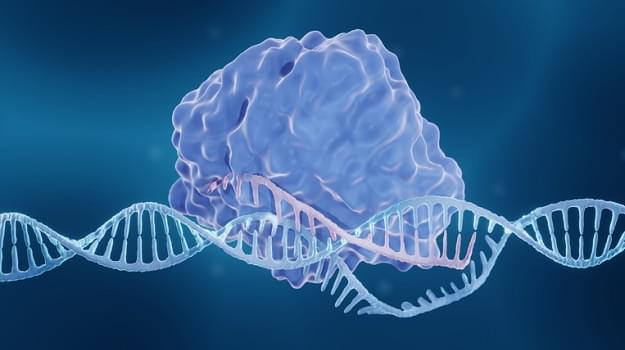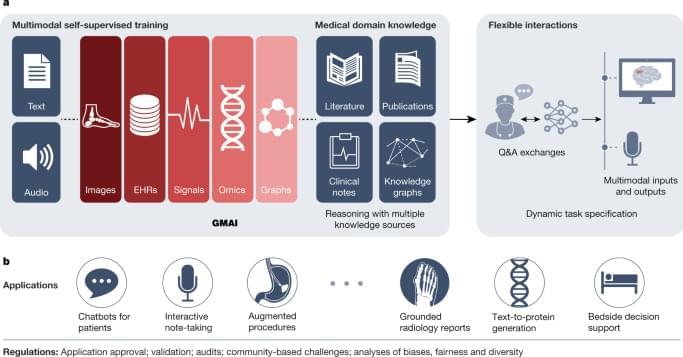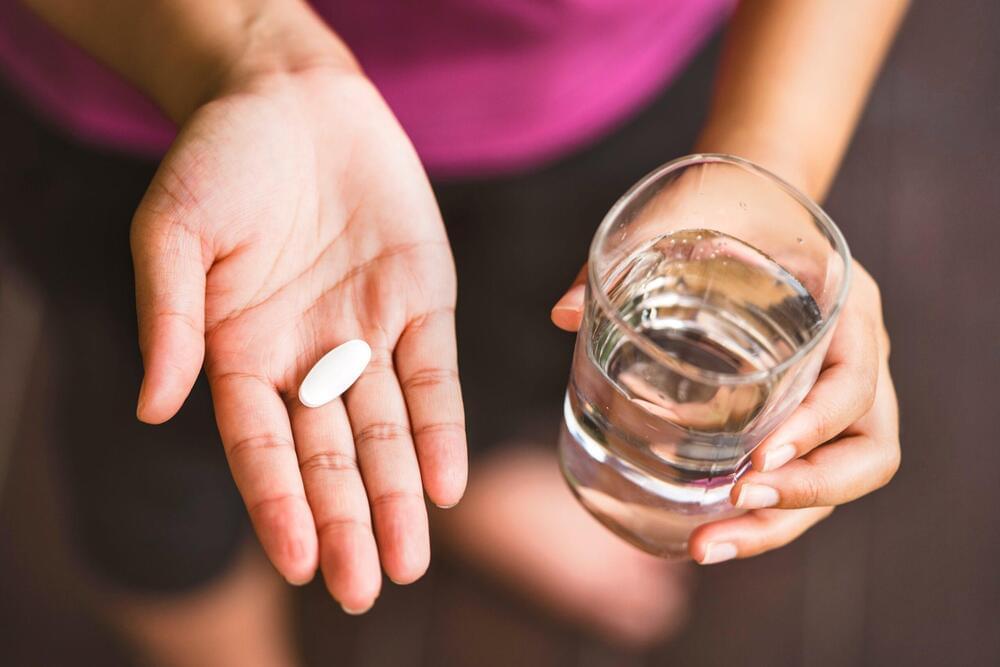Taken in pill form, the drug would eliminate cells in the human body that are responsible for advancing the ageing process – potentially doubling our lifespan. But is this desirable?
Category: biotech/medical – Page 1,353

A data scientist cloned his best friends’ group chat using AI
As data scientist Izzy Miller puts it, the group chat is “a hallowed thing” in today’s society. Whether located on iMessage, WhatsApp, or Discord, it’s the place where you and your best friends hang out, shoot the shit, and share updates about life, both trivial and momentous. In a world where we are increasingly bowling alone, we can, at least, complain to the group chat about how much bowling these days sucks ass.
“My group chat is a lifeline and a comfort and a point of connection,” Miller tells The Verge. “And I just thought it would be hilarious and sort of sinister to replace it.”
So he did.

GPT-5: A New Era of Artificial Intelligence or the Beginning of the End of Mankind? | Pro Robots
Do you like our content? Please support PRO Robots on Patreon.
—
https://www.patreon.com/PRORobots.
—
Your contributions will help us to create better content and to improve our service for you and our PRO Robots community. Every dollar counts and will help us keep working for you.
Thank you for your support!
All about AI: https://youtu.be/Ic8yVrm58lI
—
👉For business inquiries: info.prorobots@gmail.com.
✅ Instagram: https://www.instagram.com/pro_robots.
—
Will artificial intelligence destroy humanity? Will GPT-5 be the first artificial general intelligence? Why are neural network experts calling on missile strikes to destroy the AI development centers? That and review of new robot superpowers and the ProMat 2023 robot show is in one video! Watch till the end, it’s gonna be interesting!
00:38 — Will GPT-5 destroy humanity?
03:02 — Free Midjourney is no more.
03:40 — Robots learning new tricks.
05:27 — Robots the Omnipresent.
06:34 — Cheesecake won’t be the same again.
07:17 — A 3D-printed rocket.
08:07 — America’s first lunar rover.
08:38 — ProMat 2023 Robotics Expo.
11:04 — Robots and hot coffee.
11:38 — Drones and droids.
12:22 — Dental hygienist robot.
#prorobots #robots #robot #futuretechnologies #robotics.
More interesting and useful content:

Gene Editing Therapeutics Could Hit the Market in 2023
Pictured: Illustration of CRISPR-Cas9 editing DNA / iStock, Artur Plawgo
Currently, there are no gene editing–based treatments on the market, but the technology continues its march toward potential FDA approval, with several products in mid-and late-stage trials. As these programs mature, 2023 could be a pivotal year for companies in the space. Here are some highlights to look forward to as the year progresses.
CRISPR Therapeutics/Vertex Pharmaceuticals.


Meet 10 Women Who Are Leading The Synthetic Biology Revolution
In the last decade, we have witnessed biology bring us some incredible products and technologies: from mushroom-based packaging to animal-free hotdogs and mRNA vaccines that helped curb a global pandemic. The power of synthetic biology to transform our world cannot be overstated: this industry is projected to contribute to as much as a third of the global economic output by 2030, or nearly $30 trillion, and could impact almost every area of our lives, from the food we eat to the medicine we put in our bodies.
The leaders of this unstoppable bio revolution – many of whom you can meet at the SynBioBeta conference in Oakland, CA, on May 23–25 – are bringing the future closer every day through their ambitious vision, long-range strategy, and proactive oversight. These ten powerful women are shaping our world as company leaders, biosecurity experts, policymakers, and philanthropists focused on charting a new course to a more sustainable, equitable, clean, and safe future.
As an early pioneer in the high-throughput synthesis and sequencing of DNA, Emily Leproust has dedicated her life to democratizing gene synthesis to catapult the growth of synthetic biology applications from medicine, food, agriculture, and industrial chemicals to DNA data storage. She was one of the co-founders of Twist Bioscience in 2013 and is still leading the expanding company as CEO. To say that Twist’s silicon platform was a game-changer for the industry is an understatement. And it is no surprise that Leproust was recently honored with the BIO Rosalind Franklin Award for her work in the biobased economy and biotech innovation.
Treating a Heart Attack before It Happens
The procedure is a long, long way from being applicable to humans, the researchers stress. But their findings, published today in Nature Cardiovascular Research, reshape our understanding of the regenerative capabilities of the heart – and possibly other organs – and how they might be enhanced through preventive medical intervention.
“It’s a proof of concept,” says Tzahor, “and it points to new avenues of research that examine giving heart treatment not only after the damage happens, but from a preventive position that increases the capacity for recovery from an injury before the damage even occurs.”

Common dietary supplement proven to combat breast cancer
In recent years, cancer therapies have often fallen short of expectations, with tumors developing resistance to medication. One such example is alpelisib, a drug approved for use in Switzerland as a treatment for advanced breast cancer.
However, a research group at the Department of Biomedicine of the University of Basel has made a breakthrough in understanding the reasons behind this resistance, publishing their findings in the journal Cell Reports Medicine.
For patients suffering from advanced and metastatic breast cancer, effective treatment options are limited. The PI3K signaling pathway is frequently overactive in breast cancer due to mutations that encourage tumor growth.
What It’ll Take To Upload Our Brains To A Computer
As long as people have been alive, they’ve wanted to stay alive. But unlike finding the fountain of youth or becoming a vampire, uploading your brain to a computer or the cloud might actually be possible. Theoretically, we already know how to do it, and Elon Musk is even trying a brain implant with Neuralink. But technically, we have a long way to go. We explain the main technological advancements that we’ll need to make whole brain emulation a reality.
MORE TECHNOLOGY VIDEOS:
Why We Still Don’t Have Smart Contact Lenses.
Why We Still Haven’t Cloned Humans — It’s Not Just Ethics.
How Blockchain And Remote Monitoring Can Improve The Healthcare Experience.
#Brain #Tech #TechInsider.
Tech Insider tells you all you need to know about tech: gadgets, how-to’s, gaming, science, digital culture, and more.
Visit us at: https://www.businessinsider.com.
TI on Facebook: https://www.facebook.com/techinsider.
TI on Instagram: https://www.instagram.com/tech_insider/
TI on Twitter: https://twitter.com/techinsider.
TI on Amazon Prime: http://read.bi/PrimeVideo.
INSIDER on Snapchat: https://insder.co/2KJLtVo.
What it’ll take to upload our brains to a computer.